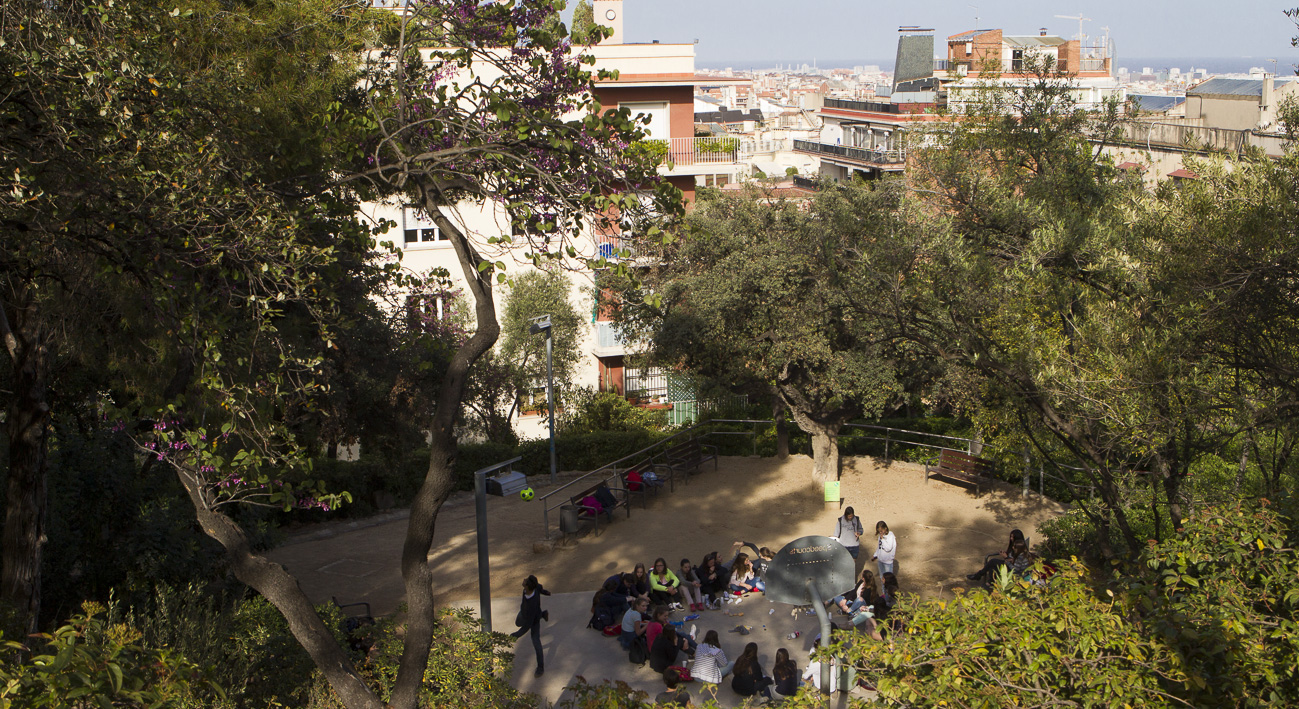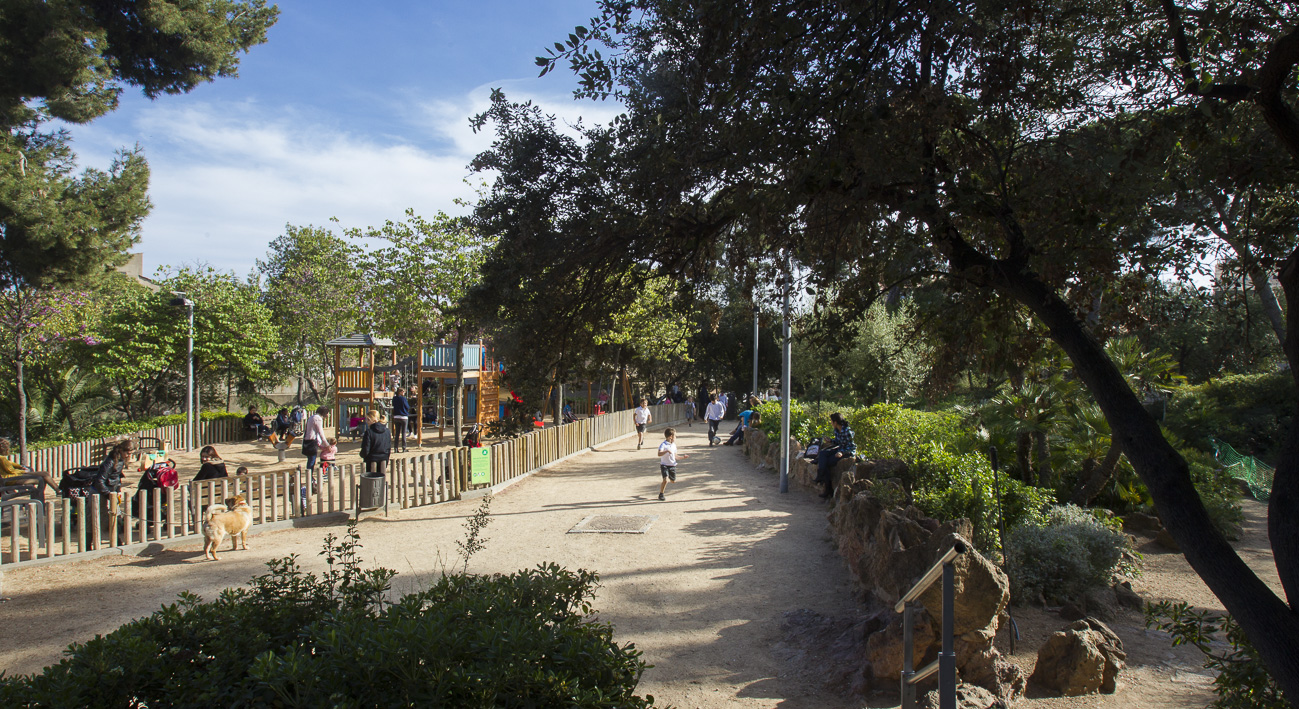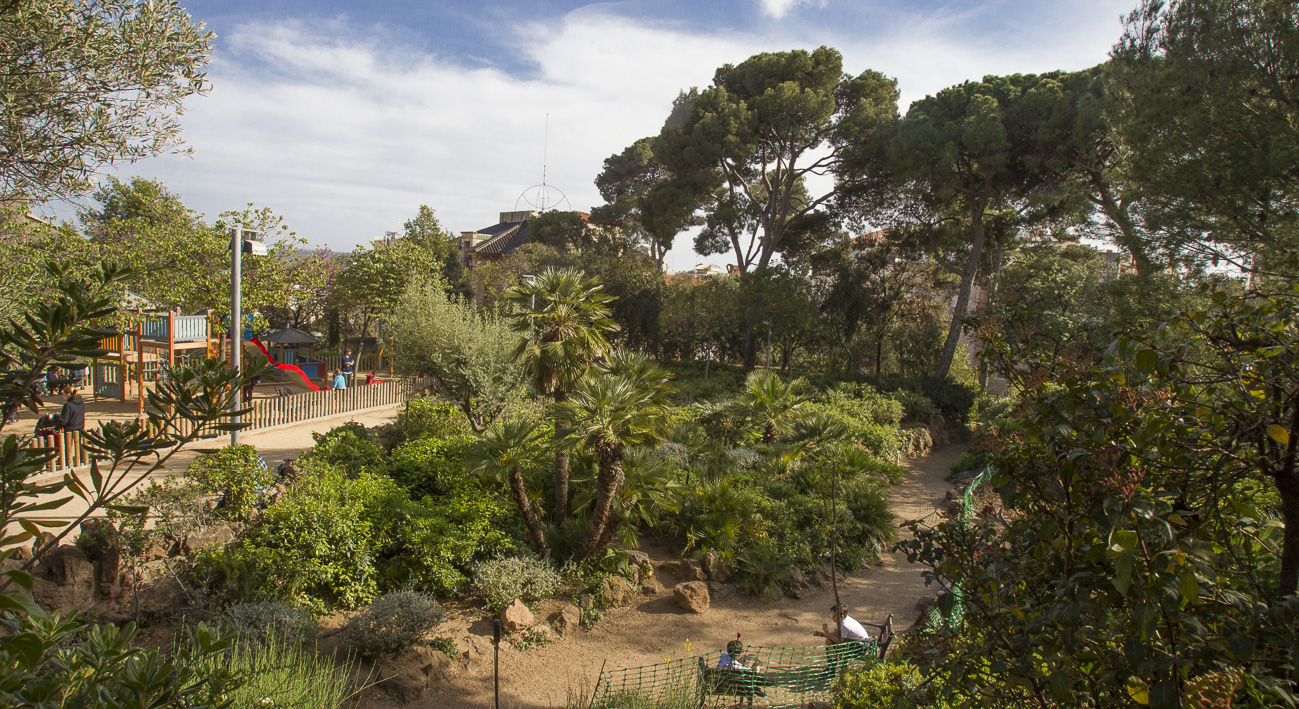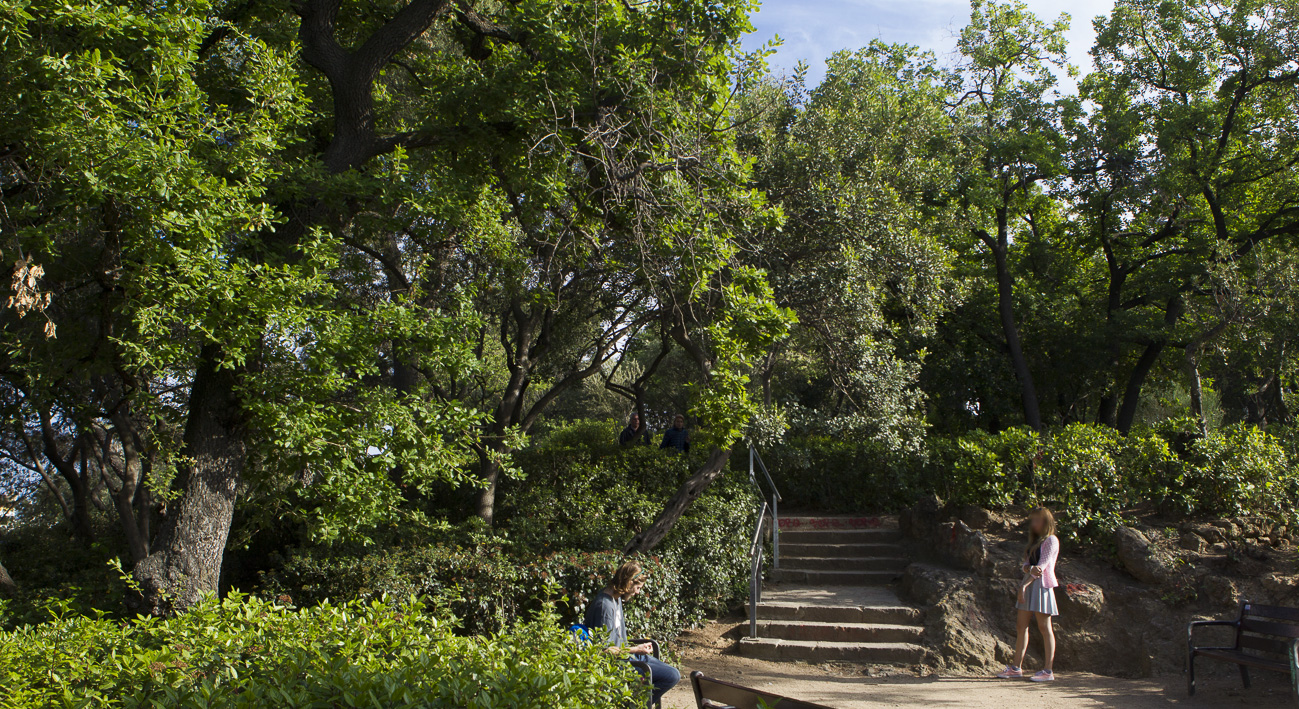Several gravelled paths take you up to the top of the hill, where you are greeted with a truly lovely view of Barcelona. The route is circular and often links the different parts of the park. Tall trees and masses of shrubs on either side ensure it is fully insulated from the buildings around it. So much so, that the first thing you notice as you enter the park is the trill of birds and a feeling of being far away from the city.
The numerous terraces make it seem flat, which it is not, and there are resting places with benches to sit awhile in the shade. Some have a special charm, such as the area dominated by a cork oak with an extensive bough spread over the benches. All in all, this is a secluded place for enjoying some peace and quiet.

History
Monterols hill, also known as Gil hill (after its former owner) at the start of the last century, is one of the spaces that Nicolau M. Rubió i Tudurí, the man in charge of Barcelona’s parks and gardens for many years, included in the system of green areas he designed for the city around 1926. It was part of an of private estate with gardens and woodland, whose highest and steepest part had never been built on when it was acquired by Barcelona City Council in the 1940s and turned into a public park. Monterols was officially opened on 8 July 1947, after it had been remodelled by the then director for Parks and Gardens, and architect, Lluís Riudor i Carol.

Biodiversity
This hill park boasts some large trees, notably oaks, cypresses, holm oaks (one of which was planted at the start of the 20th century and is listed in the Barcelona Trees of Local Interest Catalogue) and several, very tall pine trees. Other species include the enormous carob trees, large olive trees and several almond trees, relics of Sant Gervasi’s agricultural past. There are also a good many shrubs which flower in the spring, with white the predominant colour.
The small depression left from what was once a quarry has been landscaped with native vegetation. Its rough features, a little wild, mean this is certainly the most natural part of the park. Here, at the foot of two very tall and slender fan palms, you will find numerous dwarf palm trees (the palms native to our country) and a collection of aromatic plants: rosemary, thyme, lavender and sage. You will also find Mediterranean shrubs here such as broom, along with mastic, strawberry and hazelnut trees.

Art and Architecture
In the resting area to the right of the C/ Gualbes entrance there is a stone fountain that stands out for its relief of cupids holding fruit and flower garlands. The sculptor is unknown. It probably came from the workshop of a stone mason who must have copied it from a sketch of the figures.
-
- Phone number
- Tel.: 010
-
- Titularity
- Public center
- Address:
- Carrer de Muntaner, 450
- Districte:
- Sarrià-Sant Gervasi
- Neighborhood:
- Sant Gervasi - Galvany
- City:
- Barcelona
Timetable
| Periode | Dies | Hores | |
|---|---|---|---|
| de l'1 de novembre al 31 de març |
Tots els dies | de 10:00 h a 23:00 h | |
| de l'1 d'abril al 31 d'octubre |
Tots els dies | de 10:00 h a 23:00 h |
- Sections of this equipment
- Àrea de joc infantil
- Pista de bàsquet
- Àrea d'esbarjo per a gossos
- Àrea de joc infantil






